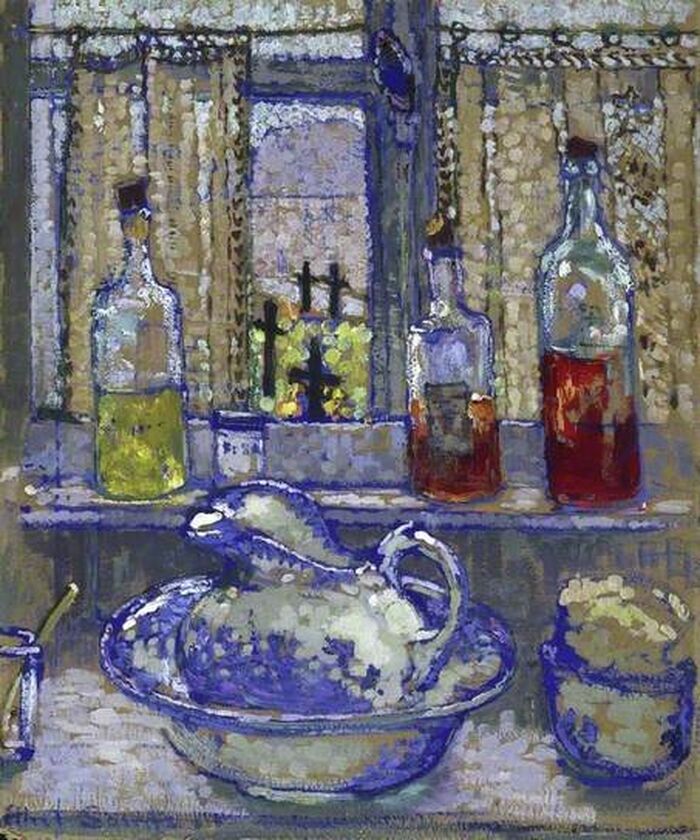Fitz Favourites: approaching grief with Mater Dolorosa
Examining this sculpture in the Fitz, Damian Walsh challenges the common assumption that art is all about its viewer

A grief-stricken figure stares down the corridor at you, as if challenging you, accusing you – and yet not looking at you at all. This is Pedro de Mena’s Virgin of Sorrows (Mater Dolorosa), a breathtakingly-detailed work of seventeenth-century sculpture. Coming down the Italian art section of the Fitzwilliam you’ll see it, watching you through the double doors. It’s one of those rare things in religious art: an arrestingly human depiction of a saint. It shows the Virgin Mary (Our Lady of Sorrows, to use one of her many devotional names), grieving the death of Jesus. But it also challenges us, whether we’re religious or not, to think about how we relate to a very human emotion: grief.
Our first reaction to religious sculpture is often distrust: it looks ‘fake’
This sculpture can transfix you. We might not be used to seeing religious art like this. As a lifelong Catholic, I’ve had images of kitschy pastel-toned statues burned into my retina: sentimental depictions of the Holy Family, or sweetly smiling martyrs who somehow manage to achieve a saccharine countenance even in the midst of agony. If you’re seeing this sculpture in the Fitz, you’ll have seen a lot of Christian art too, having had to walk via the infamous Italian Renaissance corridor with its parade of golden icons (keep an eye out for the ugly babies). Religious art (read: bad religious art) can often seem like a performance of the emotions it tries to present (grief, ecstasy and suffering are the usual choices). That’s why our first reaction to religious sculpture is often distrust: it looks ‘fake’. It’s also what opens it up so much to wonderfully camp pastiche – just look at the 2018 Met Gala, or Baz Luhrmann’s iconic Romeo + Juliet (1996).
Traditional representations of the Virgin Mary often show her as either passive and stoical (like Simone Martini’s long-suffering Madonna and Child) or pious and serene (look at Sassoferrato’s The Virgin in Prayer). Here, however, de Mena reflects on the saint’s own intensely personal grief: her story on her terms. The viewer is invited to consider the private trauma of seeing your child tortured and killed – before recognising the sheer incomprehensibility, for most of us, of such extreme suffering. This is a grief that most of us can’t access. Does this sculpture help us understand it better, or only draw attention to our limitations? The jury’s still out. It’s important here to note that this sculpture was probably meant to be displayed alongside a similar bust of Christ in a private chapel or study. Still, I don’t think that detracts from its rare focus on the Virgin Mary as a fully human subject.
De Mena’s skill in crafting this piece is stunning
De Mena’s skill in crafting this piece is stunning: every aspect of Mary’s features has been considered, down to the glass teardrops grazing her cheeks. Even her eyelashes are made of real animal hair. But this uncanny level of detail also makes the sculpture undeniably uncomfortable to look at for long. Many people can’t – immediately sidestepping on to the Brueghel or Rubens hanging nearby.
Is this an interference of our modern gaze? Looking at this intensely personal image of Mary in the setting of a public gallery tends to encourage us to scrutinise it as an aesthetic object, even an artefact or curiosity. We take a rational, scientific distance from it. But this is to misunderstand the sculpture. For the original seventeenth-century viewer, the focus of this piece would have been on relationship – the viewer’s spiritual connection to its saintly subject. It’s more difficult to have a revelation in an art gallery (but definitely not impossible).
I think the strongest reason this sculpture might feel especially uncomfortable to look at is our modern awareness of the ‘gaze’: the tendency to look at something or someone exploitatively, to use artistic representations to treat people as objects. Questions of the infamous male gaze certainly arise when looking at this sculpture in a gallery: finding aesthetic enjoyment in looking at a grieving young woman is perverse (not to mention that looking at it like this entirely forgets its original purpose). But there’s also something haunting about this sculpture, something unsettling that might actually lead you to scrutinise yourself.
It’s her eyes. Whatever angle you look at it from, Mary’s own gaze here never quite meets yours. Her grief is private; it in no way depends on you, the viewer. We’re very used to thinking about art as somehow relying on us. Sartre claimed in his essay ‘Why Write?’ that ‘one of the chief motives of artistic creation’ is the need to feel that ‘we are essential in relationship to the world’: we paint a landscape to assert our place in it. But what if the art we create or look at doesn’t have to point back to us? Maybe de Mena’s sculpture can challenge our artistic self-centredness.
 Comment / Plastic pubs: the problem with Cambridge alehouses 5 January 2026
Comment / Plastic pubs: the problem with Cambridge alehouses 5 January 2026 News / Cambridge businesses concerned infrastructure delays will hurt growth5 January 2026
News / Cambridge businesses concerned infrastructure delays will hurt growth5 January 2026 News / New movement ‘Cambridge is Chopped’ launched to fight against hate crime7 January 2026
News / New movement ‘Cambridge is Chopped’ launched to fight against hate crime7 January 2026 News / Uni-linked firms rank among Cambridgeshire’s largest7 January 2026
News / Uni-linked firms rank among Cambridgeshire’s largest7 January 2026 News / AstraZeneca sues for £32 million over faulty construction at Cambridge Campus31 December 2025
News / AstraZeneca sues for £32 million over faulty construction at Cambridge Campus31 December 2025










